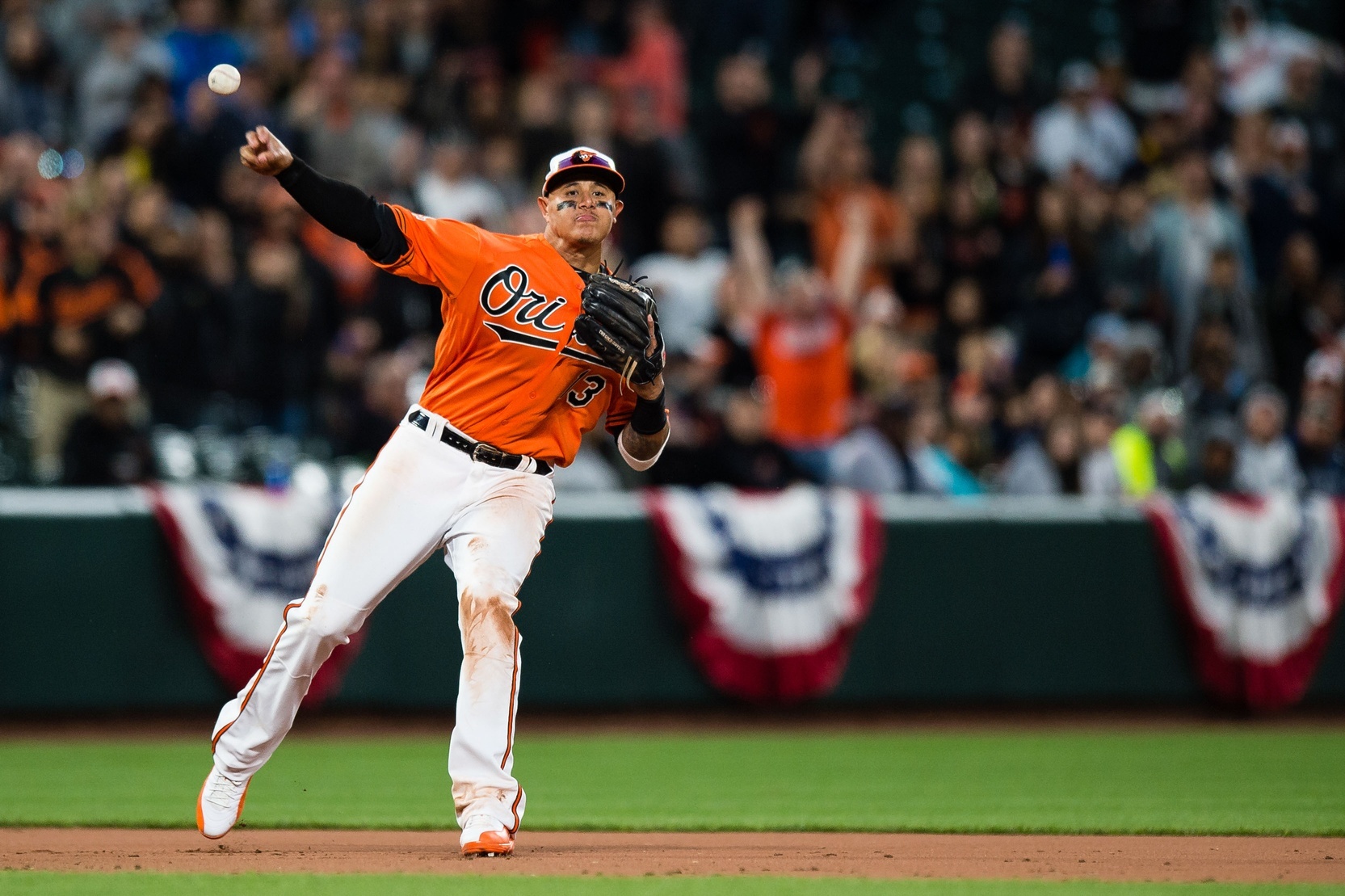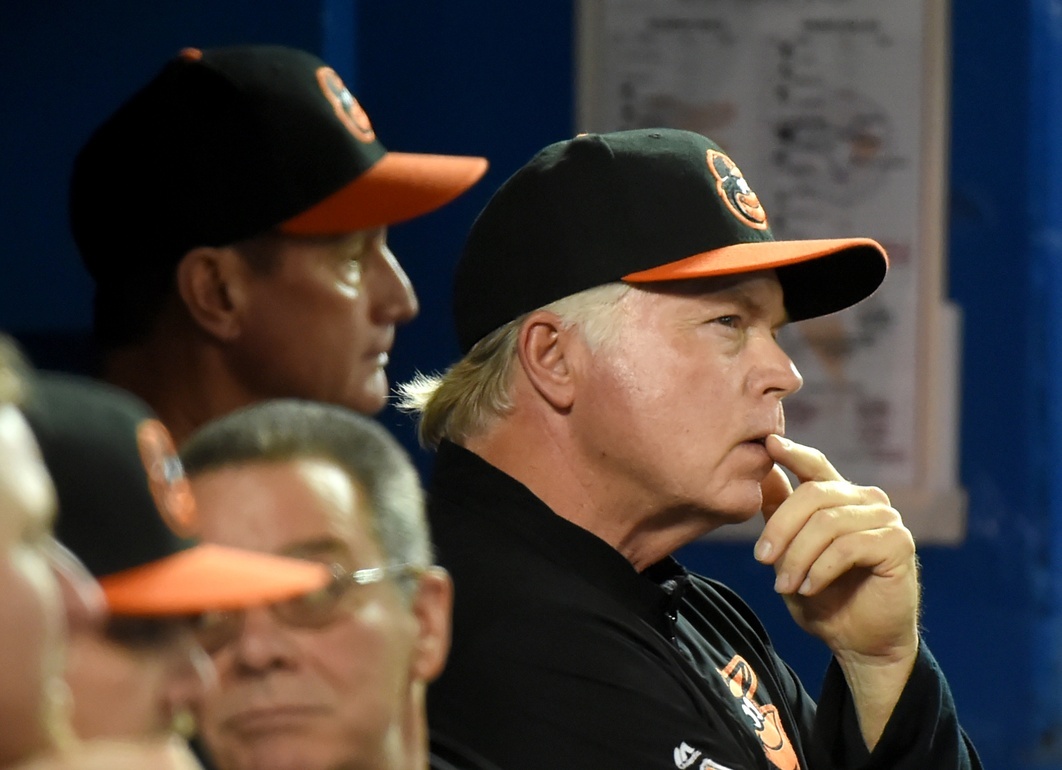When the Baltimore Orioles lost to the Toronto Blue Jays in last year’s epic American League Wild Card game, a single thought raced through the minds of baseball fans everywhere: Where the heck was Zach Britton? How could Britton, the Baltimore closer who had put up otherworldly numbers in 2016, not even make an appearance in a winner-take-all game at the end of the year?
The decision not to use him as the team’s bullpen faltered will haunt Orioles manager Buck Showalter for the rest of his career. Who knows if the Orioles would have won that game, or how far they would have gone, had Britton got a chance.
Videos by VICE
But that wasn’t the thought that went through my head at the time. Instead, I had the same thought that I’ve had for most of the past decade:
Well, that probably does it for the Orioles.
Read More: The Curious Case of Baseball’s Missing Fastballs
Fast-forward six months, and Baltimore not only sits in first place, they also have the best record in the American League. And so, I am left with the other thought I’ve had for most of the past decade.
How the heck do the Orioles keep doing this?
Yes, the sample size is small, but this is part of a larger trend. Since 2012, the Orioles have made the playoffs three times, and they’ve won at least 85 games in every year but 2015. They’ve finished third or better in each of those years, and that’s happened despite Baltimore playing in one of the best—and most expensive—divisions in baseball, the American League East. And it’s happened despite the fact that every year, they seem to come into the season with a talented but weird, flawed, and misshapen roster.
Rather than just ask the question, I decided to take a deeper look at two things. First, why has Baltimore been so good? And second, am I crazy for thinking they shouldn’t be this good?

Manny Machado is a real life baseball superstar. Photo by Patrick McDermott-USA TODAY Sports
Let’s start with the star power. Does Baltimore have a star? You bet your hat they do. Manny Machado has become one of the best two-way players in the game. He’s been worth six or more Wins Above Replacement in three of the past four years, and despite a slow start this season (.615 OPS heading into Wednesday’s game against the Reds) he’s always an MVP candidate. The Orioles also have above-average centerfielder Adam Jones, and two of the few 80-grade power hitters in baseball in Chris Davis and Mark Trumbo.
But is this really a great lineup? There’s power from one to nine, but several of the regulars have approaches that leave a lot to be desired. Trumbo and Davis combined for nearly 400 strikeouts last season, but at least each also drew more than 50 walks. They were the only members of the Baltimore lineup who did. Jonathan Schoop tacked on 137 strikeouts and walked just 21 times. It’s a fine lineup, but it’s certainly not one that screams offensive juggernaut.
How about the defense? Well, the infield defense sure seems OK. “OK” might be an understatement. Davis isn’t a great defender, but he holds his own at first. Schoop isn’t going to remind anyone of Roberto Alomar, but he has solid hands and gets to everything he should. J.J. Hardy isn’t a spring chicken, but he’s still one of the best defenders at shortstop. And Machado? Machado might be the best defensive third baseman I’ve ever seen. And I’m old.
The outfield defense is not near that level. Adam Jones has a flair for the dramatic—everyone saw the ‘Last Supper’-esque catch he made at the World Baseball Classic—but he isn’t anything close to an elite defender in center. He might profile best in a corner. The Orioles might even be willing to try that, if they didn’t have among the worst defensive corner outfielders in baseball: Seth Smith, who Seattle traded because they wanted a defensive upgrade in right, and Hyun Soo Kim, who was a negative 1.6 in defensive WAR last season despite playing in only 95 games.
All right, so strengths and weaknesses with the offense and defense. Pitching must be great, right? The bullpen sure is. Britton is on the ten-day disabled list with a forearm strain, but assuming he makes a full recovery, he gives the Orioles arguably the best closer in the American League. It’s not just him, though. Brad Brach not only has a fun name, he also has swing-and-miss stuff, with 92 strikeouts in 79 innings last year. There’s also flame-throwing Mychal Givens. He’s still learning to harness his command, but he gives the Orioles another pen arm who can miss plenty of bats. Add in crafty right-hander Darren O’Day and you have one of the better bullpens in baseball. If the Orioles have a lead after the sixth inning, the other team is in trouble.
Which sounds good, but how do the Orioles have the lead after six innings so often with this rotation? Dylan Bundy has been great so far this year, but he has yet to prove he can do it over an extended period, and there will always be injury concerns. Kevin Gausman appears to have found a home in the rotation, but an ace he is not. And the rest? Chris Tillman? Wade Miley? Ubaldo Jimenez? No, it’s not the Padres rotation, but it certainly isn’t the Dodgers or Mets, either. Or even the Rays.
So the lineup is good but flawed. The infield defense is great; the outfield defense is porous. The bullpen is great; the starting pitching leaves a lot to be desired. And yet here the Orioles are, year after year, outperforming the metrics and the expert predictions. How are they doing it?

Mistakes, he’s made a few. But Buck Showalter is among baseball’s best managers. Photo by Dan Hamilton-USA TODAY Sports
Could it possibly be Buck Showalter?
Yes, the manager who made arguably—or maybe even inarguably—the worst decision of the 2016 postseason could be the glue that’s holding this together.
Baseball is not the kind of sport where one player can carry a team year after year; if it were, we’d have seen Mike Trout’s Angels in the playoffs more recently. So we can rule out the notion that Machado is single-handedly lifting the Orioles into the playoffs. It certainly isn’t the player development team either; the Orioles have had one of the worst farm systems in baseball the past couple of seasons, and very few additions to the club have been from the farm.
If you watch the Orioles play night in and night out, however, you’ll come away impressed with the decision-making of Showalter. Wherever you land on the sabermetrics vs. scouting spectrum, you can appreciate his tactics.
When talking to other coaches and executives about the best managers in baseball, Showalter’s name often comes up. Players rave about his communication skills, and if you’re a believer in clubhouse chemistry, he ranks at or near the top with skippers like Tito Francona and Joe Maddon. He also doesn’t sacrifice bunt much, and the Orioles are typically station-to-station when it comes to steals, or lack thereof. He isn’t terribly creative with his bullpen usage or his lineup card, but overall the good far outweighs the bad.
How much credit can we really give a manager, though? Studies have shown that a manager’s lineup card and in-game decision-making don’t have nearly the impact that we once believed. Maybe Showalter gets the most out of his players, maybe he puts them in a place to feel like they can succeed, but that’s only speculation. You have to give credit where credit is due, and Showalter might be one reason the Orioles have been so consistently, surprisingly good, but he can’t possibly be the only reason.
Be it luck, management, or some combination of the two, the only thing for sure is that, barring injuries, the Baltimore Orioles are likely to be in contention in 2017. Just don’t expect anyone to understand how.
Want to read more stories like this from VICE Sports? Subscribe to our daily newsletter.




